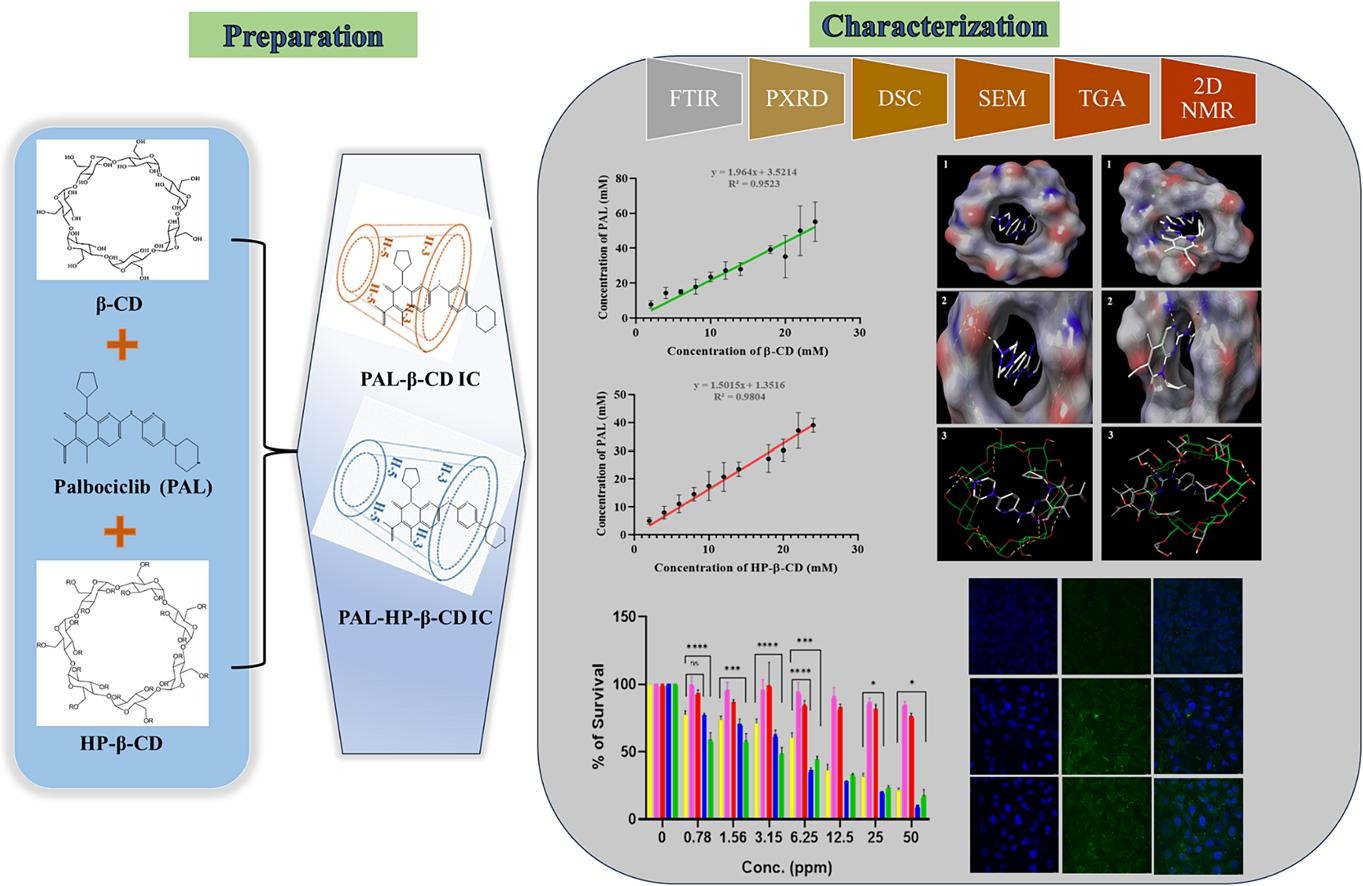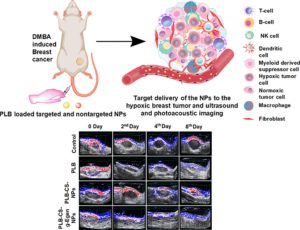Fabrication of β-cyclodextrin and 2-hydroxypropyl-β-cyclodextrin inclusion complexes of Palbociclib: Physicochemical characterization, solubility enhancement, in -silico studies, in vitro assessment in MDA-MB-231 cell line

Palbociclib (PAL) is an anti-cancer molecule that is highly selective for CDK4/6 inhibition and approved for the management of advanced breast cancer. Due to its down-and-out aqueous solubility and poor oral bioavailability, therapeutic applications have been compromised in the pharmaceutical field. The work aims to explore the physicochemical properties, aqueous solubility, dissolution rate, and in silico analysis of PAL complexed with β-cyclodextrin (β-CD) and 2-hydroxypropyl-β-cyclodextrin (HP-β-CD) and to ascertain the implications of complexation on the in vitro anti-cancer activity of PAL.
Highlights
- Inclusion complexes of Palbociclib with β-CD and HP-β-CD developed by freeze drying method and characterized for its physiochemical properties.
- Both inclusion complexes improved aqueous solubility of Palbociclib by 31.05 and 37.99-fold respectively.
- In-silico studies revealed higher interaction of Palbociclib with β-CD and HP-β-CD.
- In-vitro cell-based assay conclude the higher efficacy against MDA-MB-231 cells.
The two inclusion complexes (ICs) of PAL were prepared by the methodology of freeze-drying and further characterized by FT-IR, DSC, TGA, FESEM, and PXRD. The 1H NMR and 2D NMR revealed that a significant chemical shift was observed for the ICs as well and a correlation was seen between the CH3 of HP-β-CD with protons (ring C & D) of the pyrimidine and pyridine rings respectively. AL type graph was obtained depicting the KS value to be 625.4 M−1 and 3760 M−1 respectively for PAL-β-CD and PAL-HP-β-CD. Also, the aqueous solubility of PAL was improved by 31.05 and 37.99-fold respectively by both the ICs. The stoichiometric ratio of 1:1 was established by Job’s plot. Additionally, the results of in-silico studies were in correlation with the theoretical calculations.
Further, it was found that the in vitro cytotoxicity investigation on MDA-MB-231 cells reported IC50 value for PAL-β-CD IC and PAL-HP-β-CD IC a 2.33– and 3.38-fold a lower IC50 value than PAL (IC50 = 9.55 ppm) which indicates higher cellular toxicity for both ICs in comparison to free PAL. Additionally, PAL-β-CD IC (41.99 ± 2.63 %) and PAL-HP-β-CD IC (57.33 ± 1.58 %) showed higher apoptosis than PAL (25.17 ± 1.27 %) also the cellular internalization was seen higher for both the ICs as well as the ROS formation, and MMP depolarization was evidenced.
Read more here
Materials
PAL was supplied by Novartis (Hyderabad, India). The Analytical grade β-CD (1135 Da) and HP-β-CD (1541.5 Da) were acquired commercially from Avra Synthesis Pvt. Ltd. (Hyderabad, India) and Alfa Aesar (Heysham England). 3-(4, 5-Dimethylthiazol-2-yl)-2, 5-diphenyltetrazolium bromide (MTT), Dulbecco’s Modified Eagle Medium (DMEM) (High glucose), Fluorescein isothiocyanate (FITC), streptomycin, fetal bovine serum (FBS), and 2 mM glutamine. was purchased from HiMedia Lab. Pvt. Ltd.
Priti Paul, Ujala Gupta, Rahul Kumar, Sharon Munagalasetty, Hara Prasad Padhy, Rahul Nair, Srushti Mahajan, Indrani Maji, Mayur Aalhate, Vasundhra Bhandari, Santosh Kumar Guru, Pankaj Kumar Singh, Fabrication of β-cyclodextrin and 2-hydroxypropyl-β-cyclodextrin inclusion complexes of Palbociclib: Physicochemical characterization, solubility enhancement, in -silico studies, in vitro assessment in MDA-MB-231 cell line, Journal of Molecular Liquids, Volume 399, 2024, 124458, ISSN 0167-7322, https://doi.org/10.1016/j.molliq.2024.124458.
Read also the following interesting article:


